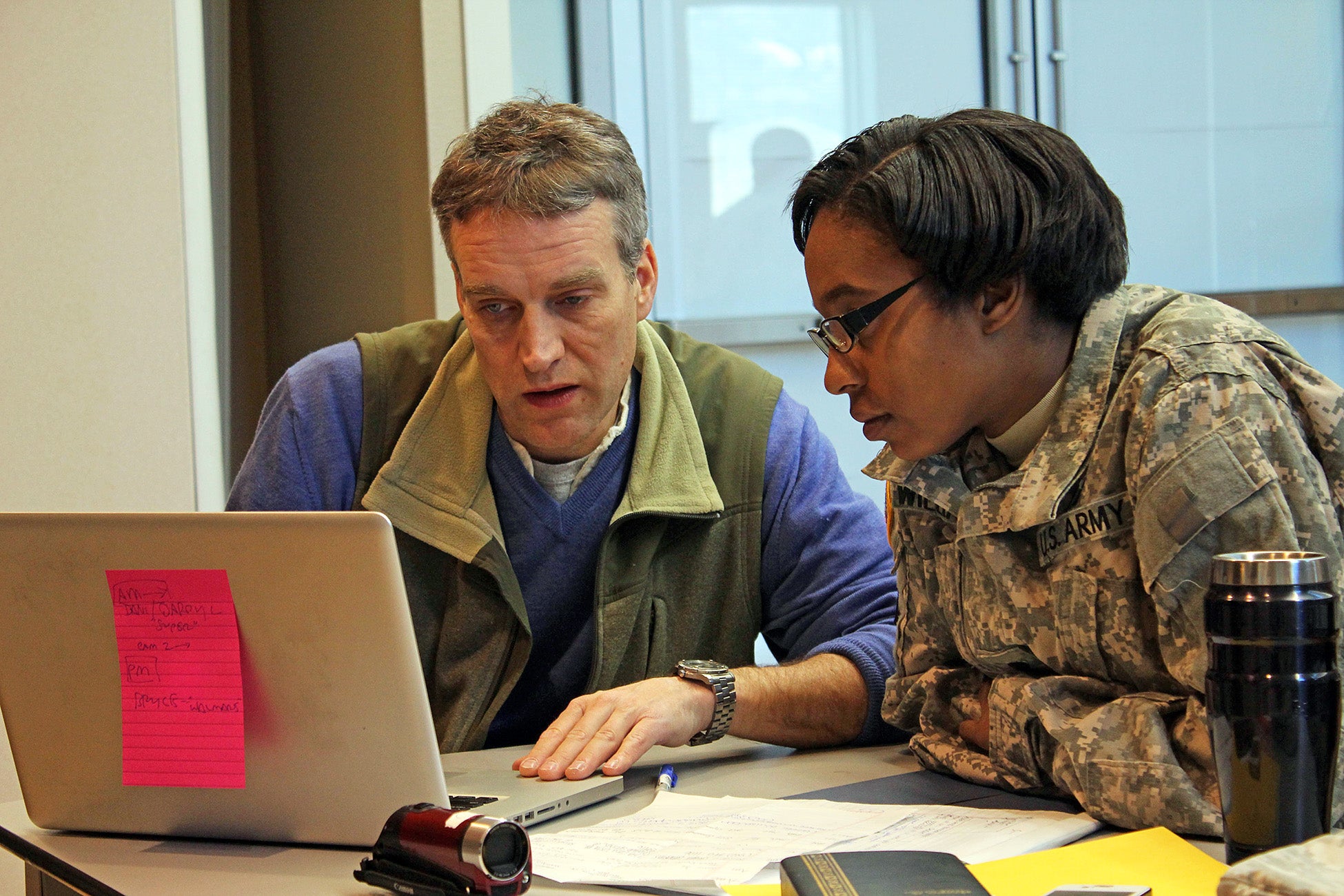Patton Veterans Project helps soldiers, veterans with PTSD
Patton Veterans Project helps soldiers, veterans with PTSD
The Patton Veterans Project and its I WAS THERE film workshop initiative were conceived and created by filmmaker and psychologist Benjamin Patton – grandson and son of the generals George S. Patton.
Having previously designed and led summer film camps in Mass. and Colo. enabling teens to explore adolescent identity issues through film, Ben began seeking opportunities to apply the same model to combat veterans coping with post-traumatic stress and transition home from deployment.
In 2011, he was invited by the hospital commander at Fort Carson, Colo. to hold a pilot film workshop for soldiers being treated at Carson’s Warrior Transition Battalion there. Upon meeting Maj. Gen. Joe Anderson (commander of Carson’s 4th Infantry Division) there, Ben’s team was granted broad access to all 4ID soldiers and area veterans and invited back to Fort Carson regularly.
Since then, the Patton Veterans Project (PVP) has conducted more than 50 workshops serving some 1,200 veterans at eight major U.S. bases, as well as at VA hospitals, Vet Centers, universities, and in Israel.
With well over half of veterans with post-traumatic stress disorder or depression dropping out of VA mandated therapies, or resisting mental health support altogether, innovative modalities such as this one can be critical levers for those helping heal our warriors. Data collected by PVP since 2012 indicates that these workshops can substantially help participating veterans.
In 2017 a major VA research hospital partnered with PVP to undertake the first-ever clinical study of collaborative filmmaking as a treatment modality for post-traumatic stress among veterans. While narrative or storytelling is central to all mandated VA therapies, it is believed that creating narrative with a video camera – an immensely powerful storytelling tool that so many younger veterans already know rather well – can be a game-changing approach to treating posttraumatic stress.
Preliminary results of the study, which were presented at the American Psychological Association’s Annual Conference in August, indicate that this model of filmmaking can help struggling veterans reduce isolation and suicidal ideation and improve their sense of community and agency, all while they engage with other vets in a fun collaborative activity of creating a film relevant to their respective service-related challenges.
Film examples
Broken was created by veterans James Deans and Jason M. Tatro at Fort Campbell. The film highlights the impact that deployments can have on the individual. View it at https://vimeo.com/163256673/214dc5b324.
Effin’ Paperwork was created by veteran Kevin Willette at an I WAS THERE film workshop, at the Clear Path for New England Veterans in Devens, MA. The workshop was part of PVP’s on-going VA clinical study. The film focuses on a veteran’s manifestations of anxiety. View it at https://vimeo.com/266099954/373efa0972.
Serenity was created by veterans Dawn Gordon and Janina Rios at an I WAS THERE films workshop in Long Island, New York. Their film is a testament to coming out on the other side of life’s struggles. View it at https://vimeo.com/144511534/37363aa69d.
For more information, please visit www.pattonveteransproject.org.


